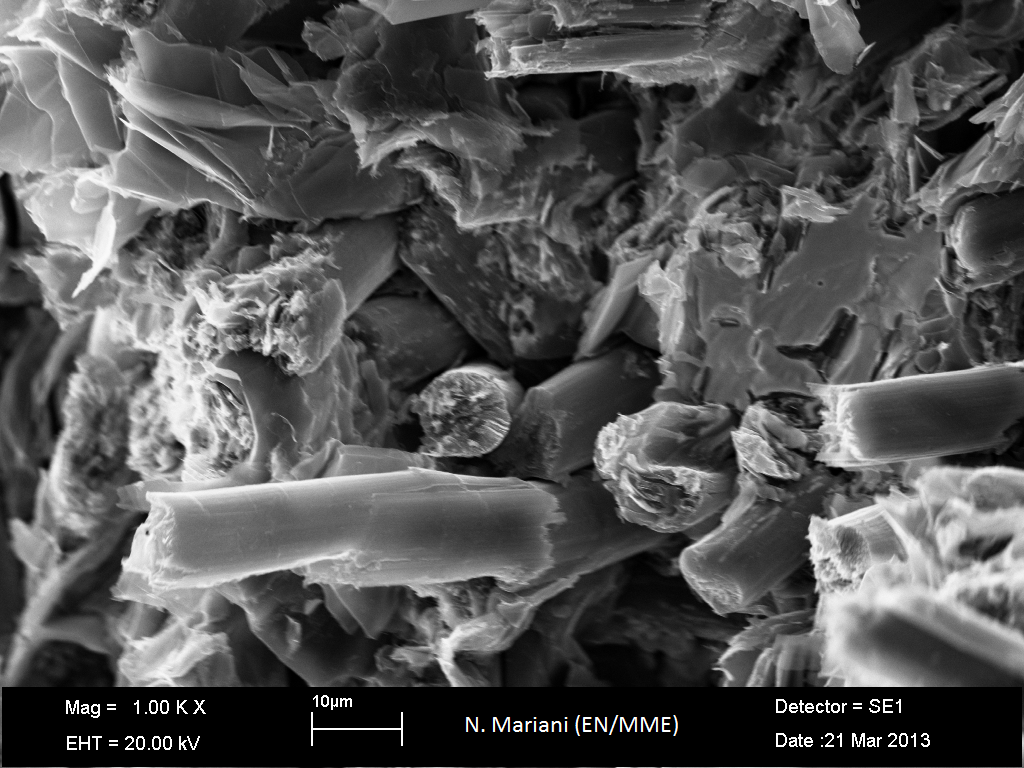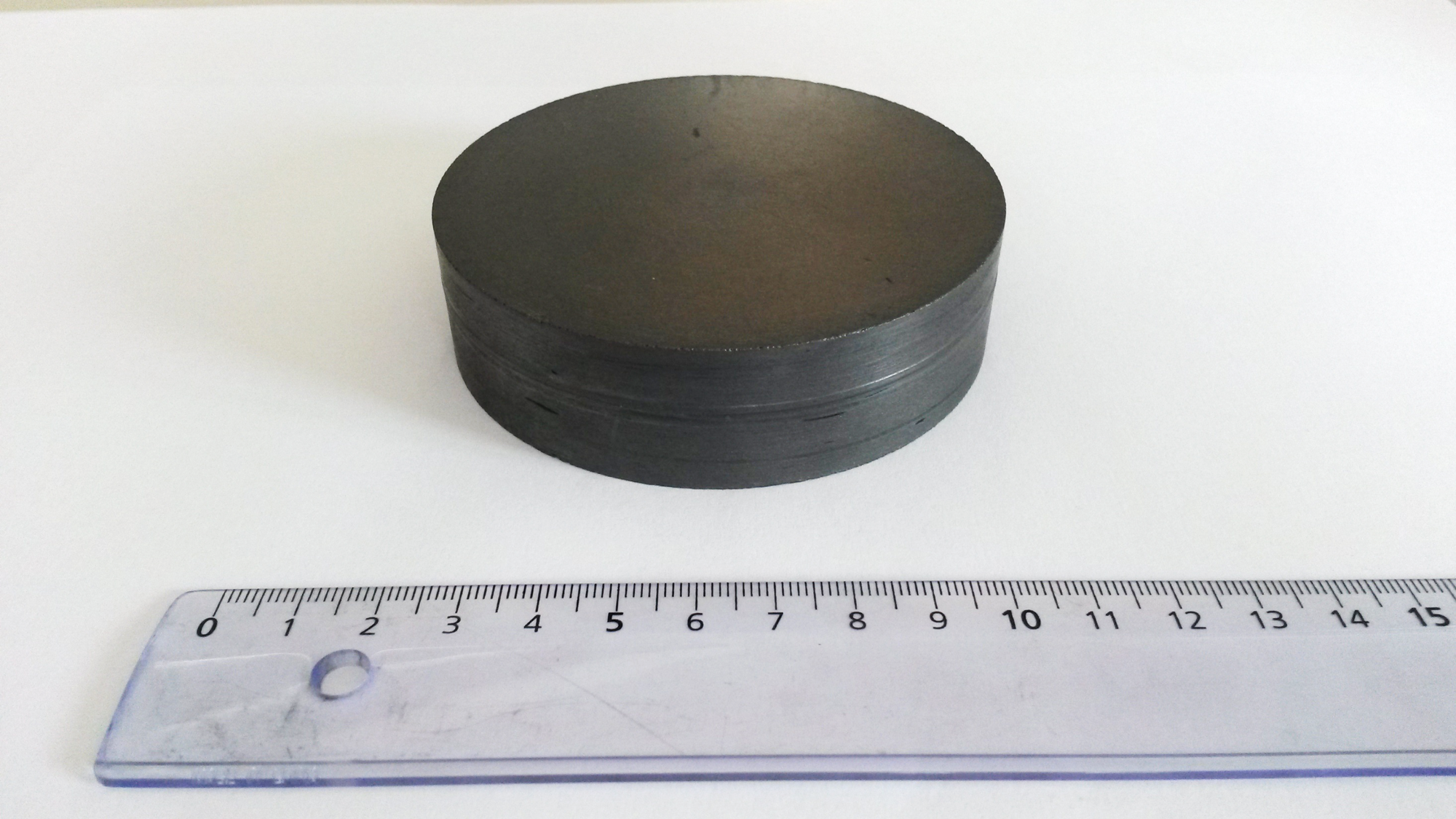![]() Novel Materials for Multi TeV Beam Collimation
Novel Materials for Multi TeV Beam Collimation

Fig 1. Close up of Molybdenum Graphite sample at nanometre scale. Image credit: CERN
Collimators must be capable of handling impacts of intense and HEP pulses and operating safely over an extended range of temperatures and pressures, in harsh radiation environments, while minimizing the perturbations to the circulating beam through impedance effects. These challenges are even more demanding with the increase of stored beam energy in future machines. No existing material can meet all the beam collimation challenges at the same time.
A far-reaching R&D program was launched at CERN by the LHC collimiation project with support from EuCARD2 and HiLumi LHC. In EuCARD2, the goal is to develop and test without and with beam, novel materials with high shock resistance and excellent thermal conductivity, replacing or complementing presently used collimator materials. In HiLumi, the impact of new materials on the collimation system performance is studied. Simulations of beam loss and energy deposition are used to define collimation requirements for the HL LHC. So far, the novel materials showing the most promising features are Copper-Diamond and Molybdenum Carbide – Graphite (MoGR) composites. The latter has recently achieved outstanding properties, combining an extremely low coefficient of thermal expansion in the temperature range from Room Temperature (RT) to more than 2000°C and a world record-breaking thermal conductivity of about 800 W/mK at RT. MoGR has a density of 2.6 g/cm3.

Fig 2. Molybdenum Graphite sample. Image credit: CERN
These novel materials must undergo a qualification with beam before being deployed in particle accelerators. The collimation material R&D activity has strong synergy with other domains of science where thermal shock resistance and high temperature operability are needed: braking systems for high-end automotives and aerospace, thermal management in high power electronics, hot parts for gas turbines and space components requiring extreme geometrical stability are but a few examples of potential applications.
